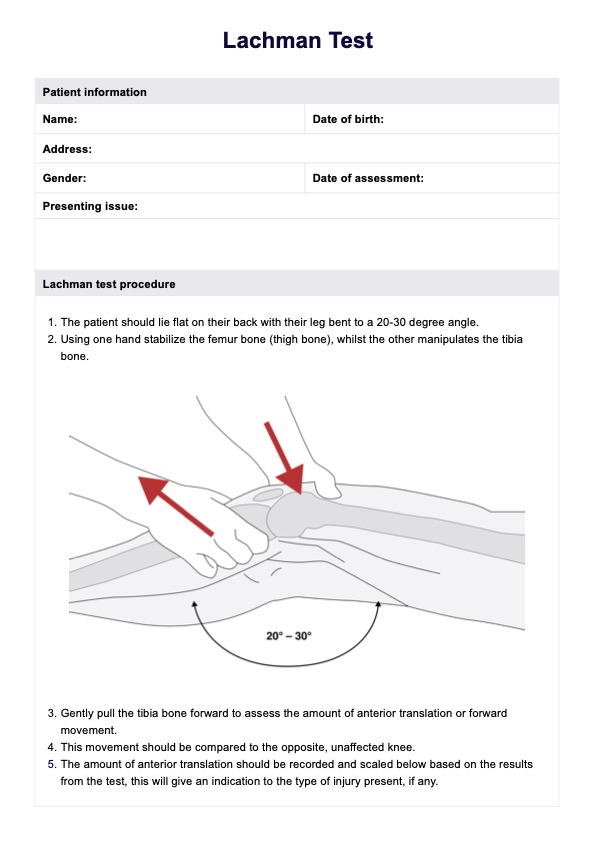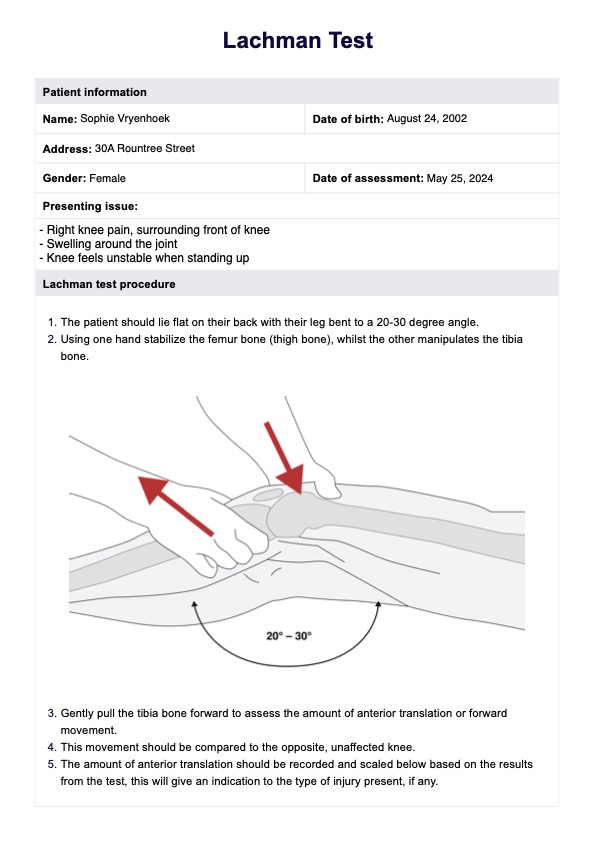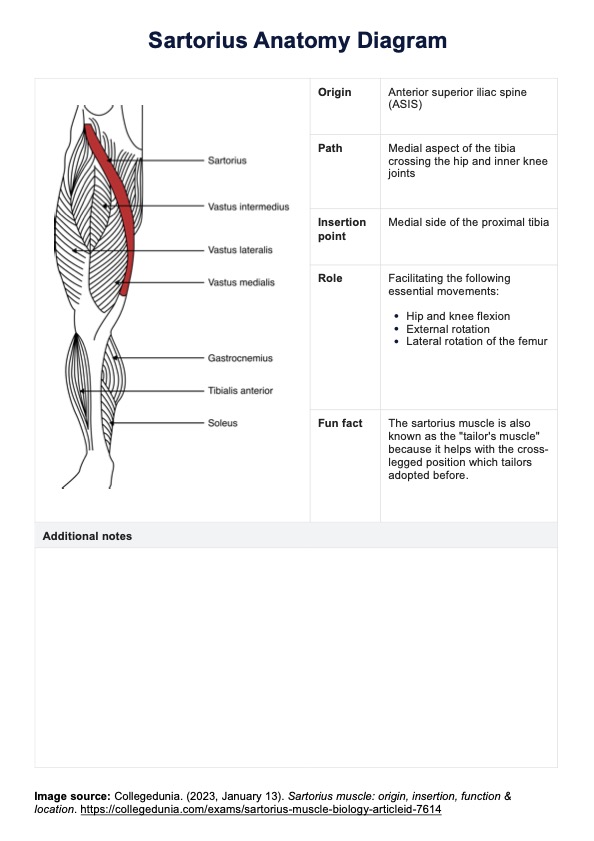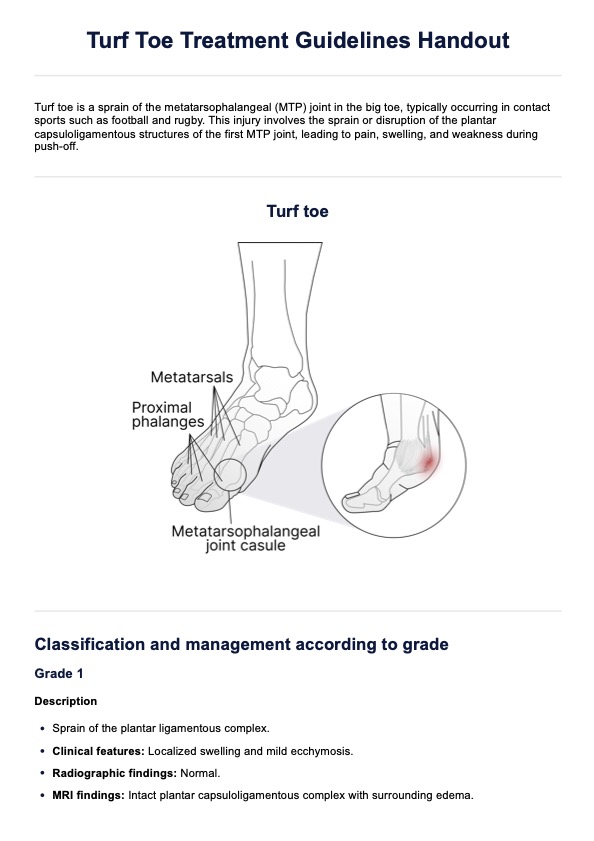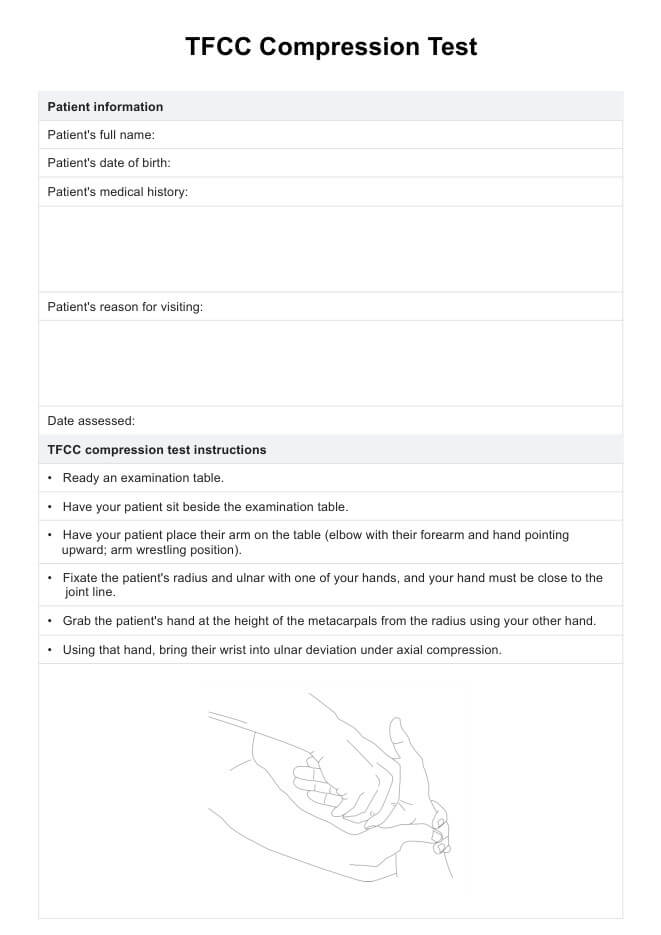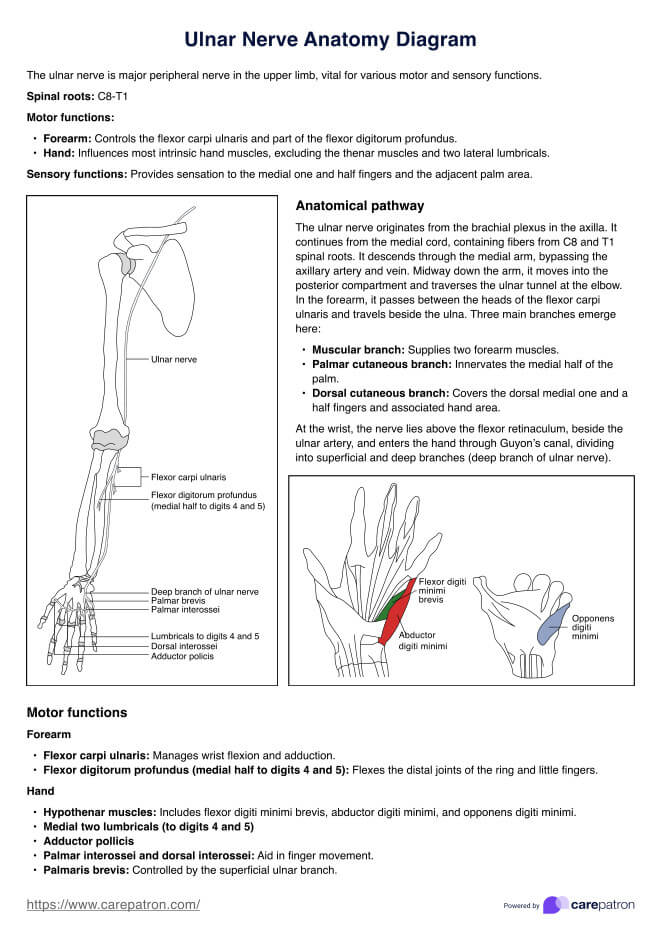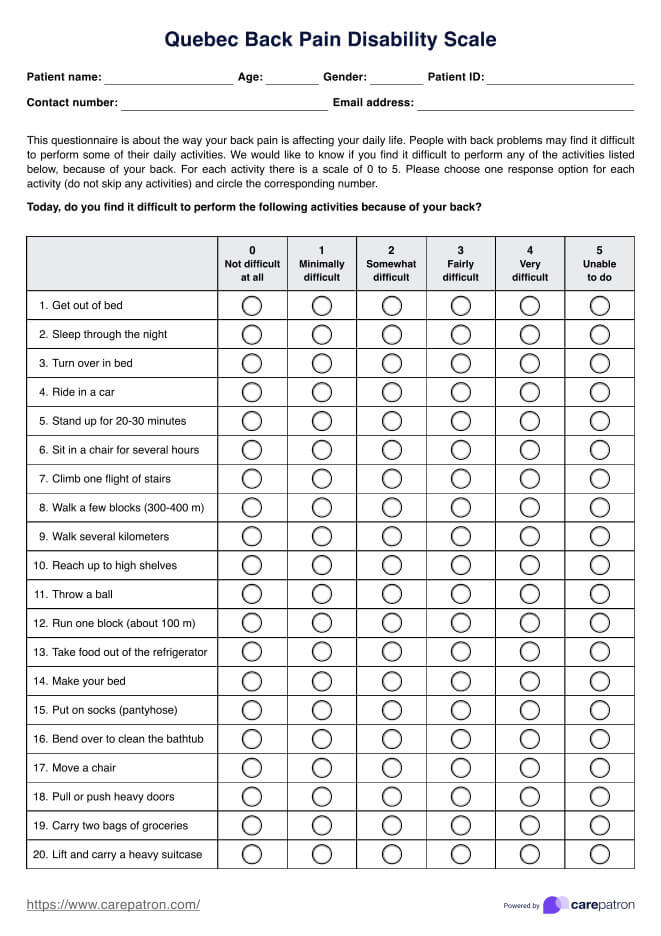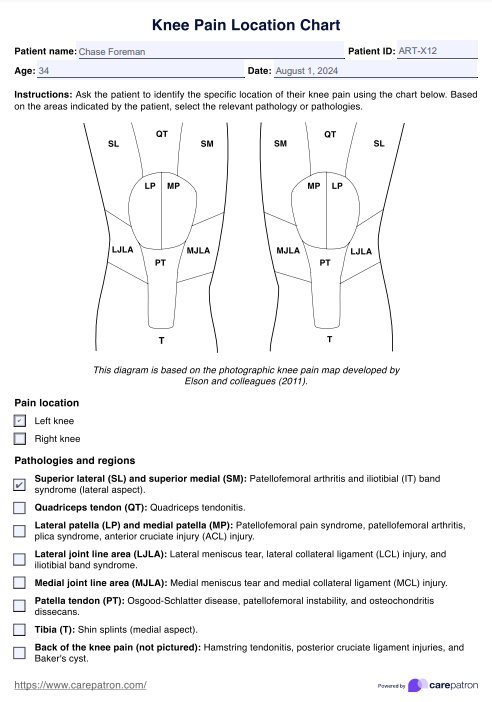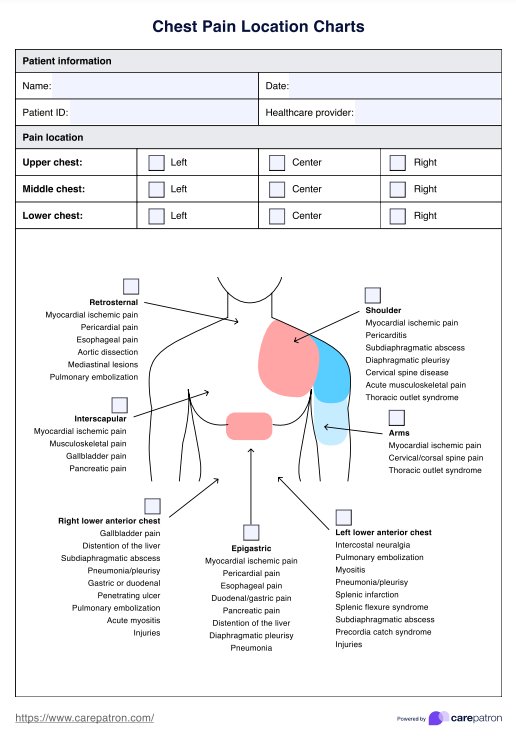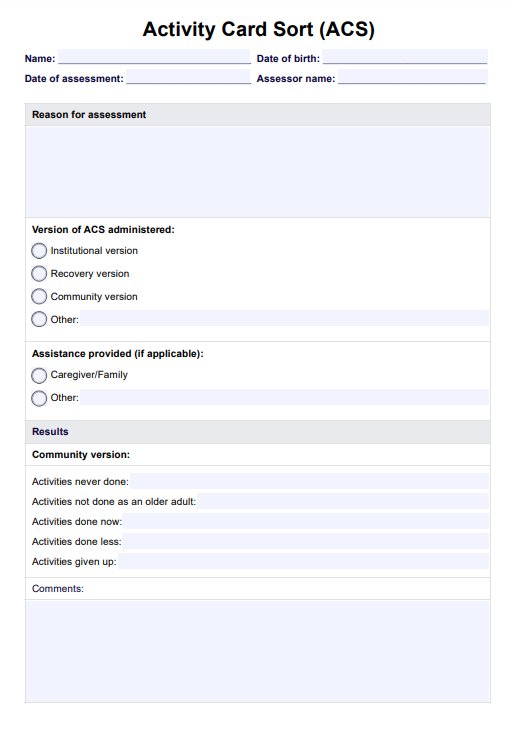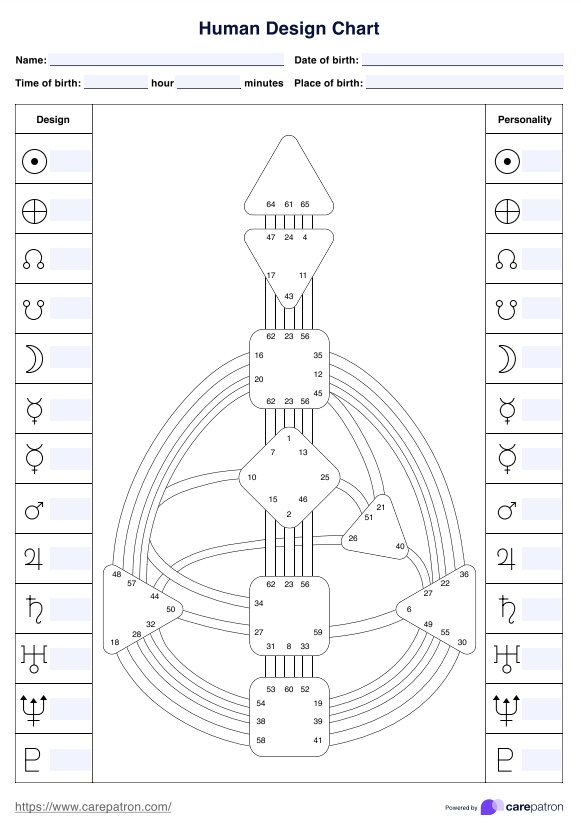Lachman Test
Learn how the Lachman Test works and its importance in orthopedic evaluations.


What is a Lachman Test?
The Lachman Test is a diagnostic tool used to evaluate the anterior cruciate ligament's (ACL) stability in the knee joint. During the test, the examiner stabilizes the femur bone with one hand while pulling the tibia forward with the other. The amount of forward movement is then compared to the opposite, unaffected knee. If the ACL is intact, the tibia should have minimal forward movement. If an ACL tear is present, there will be abnormal movement, indicating damage.
Research has shown that the Lachman Test is one of the most reliable and accurate tests for diagnosing anterior cruciate ligament injuries, with a reported sensitivity of 77.7-100% and specificity of 85-98% (Katz & Fingeroth, 1986). However, the accuracy of the test can be affected by factors such as the skill and experience of the examiner, the patient's knee pain, muscle relaxation, and joint position, along with the severity of the injury.
In addition to the traditional manual Lachman Test, some variations use devices like arthrometers to measure anterior translation. These tools can provide objective and precise measurements but may not be as widely available. Other tests, like the pivot shift test, are often performed alongside it for comprehensive assessment.
Overall, the Lachman Test remains an essential tool for evaluating ACL injuries and is often used in conjunction with other clinical tests and imaging studies to guide treatment decisions for both acute and chronic knee injuries.
Lachman Test Template
Lachman Test Example
How does this printable Lachmans Test work?
The printable Lachman Test is a tool that healthcare professionals can use to assess the integrity and stability of the knee joint's anterior cruciate ligament. The test involves the manipulation of the tibia bone whilst the knee is flexed at a 20-30 degree angle. It is used to help establish if a patient has an anterior cruciate ligament tear (ACL tear) and is considered one of the most reliable tests for detecting a torn ACL.
Here are the steps involved in using/filling the template:
Step 1: Print out the Lachman Test template
Access the Lachman Test template by clicking "Use a template," allowing you to edit the resource via the Carepatron app. For a PDF copy, choose "Download."
Step 2: Physical examination
The patient should lie flat on their back with their injured leg bent to a 20-30 degree angle. Using one hand stabilize the femur bone (thigh bone), whilst the other manipulates the tibia bone. The examiner should gently pull the tibia bone forward to assess the amount of anterior translation or forward movement. This movement should be compared to the opposite, unaffected knee.
Step 3: Interpret the results
The results of the Lachman Test can indicate the presence of an ACL injury, with abnormal anterior translation suggesting a tear or damage to the ligament. Use the Additional notes section in the template to write down your findings.
Results and interpretation
The Lachman test evaluates anterior tibial translation to assess the condition of the ACL. Tibial movement of 5 mm or more beyond the normal limb's range typically indicates an ACL rupture. Additionally, more than 2 mm of anterior tibial translation in the affected knee compared to the unaffected knee is considered a positive test, suggesting an ACL injury.
Grading of ACL laxity is categorized into three levels based on the extent of anterior tibial translation compared to the uninjured side (Coffey & Bordoni, 2020).
- Grade I (Mild): 0 to 5 mm of anterior tibial translation, indicating a minor injury with some preservation of ACL function.
- Grade II (Moderate): 6 to 10 mm of anterior tibial translation, suggesting significant ACL damage but partial continuity of the ligament.
- Grade III (Severe): 11 to 15 mm of anterior tibial translation, indicating a complete ACL rupture.
If anterior tibial translation exceeds 11 mm, the examiner should also evaluate for concomitant injuries, such as medial collateral ligament (MCL) tears or meniscal damage, which may contribute to joint instability. This grading system provides a comprehensive understanding of the ACL injury severity and informs treatment decisions.
When to use the Lachman Test and other ACL Tests?
ACL tests, including the Lachman Test, are typically used when there is suspicion of an ACL injury. The tests help evaluate knee joint stability and determine the severity and extent of ACL injuries. It can also be used to help rule out injuries to other structures, such as the posterior cruciate ligament.
Here are some situations where ACL tests may be appropriate:
Following a knee injury
ACL injuries often occur during high-impact sports or activities involving sudden direction changes or jumping. If a person experiences a knee injury during one of these activities, ACL tests may be used to determine if there is damage to the ligament.
Pre-operative assessment
Before undergoing ACL surgery, patients may experience a series of tests to evaluate the extent and severity of the injury. ACL tests can help guide surgical decision-making and provide valuable information for the surgical team.
Follow-up evaluation
After undergoing treatment for an ACL injury, patients may undergo follow-up evaluations to assess their progress and determine if additional treatment is necessary. ACL tests can evaluate knee joint stability and determine whether the ligament has healed adequately.
Athletic clearance
Athletes who have suffered an ACL injury may need to undergo testing to determine if they are ready to return to their sport. ACL tests can evaluate knee joint stability and determine if the athlete is ready to resume activity.
Benefits of these free Lachman Test Templates
Using our free Lachman Test templates can provide the following benefits:
Fully digital
Our Lachman Test templates are fully digital, allowing for easy access, storage, and sharing. This eliminates the need for paper documentation, reducing clutter and ensuring test results are organized and readily available.
Time-saving
Pre-designed templates save valuable time by offering a structured format for documenting test results. This allows healthcare professionals to focus more on patient care and less on administrative tasks.
Consistent documentation
Templates ensure consistency in recording Lachman Test results. By following a standardized format, practitioners can reduce errors, improve communication with colleagues, and maintain detailed patient records.
Easy analysis
These templates are designed to categorize results clearly by grading anterior tibial translation and identifying positive or negative outcomes. This clarity simplifies diagnosis and aids in treatment planning.
References
Coffey, R., & Bordoni, B. (2020). Lachman test. PubMed; StatPearls Publishing. https://www.ncbi.nlm.nih.gov/books/NBK554415/
Katz, J. W., & Fingeroth, R. J. (1986). The diagnostic accuracy of ruptures of the anterior cruciate ligament comparing the Lachman test, the anterior drawer sign, and the pivot shift test in acute and chronic knee injuries. The American Journal of Sports Medicine, 14(1), 88–91. https://doi.org/10.1177/036354658601400115
Commonly asked questions
A Lachman Test's accuracy depends on the examiner's skill and experience. Still, research suggests it can be reliable for diagnosing ACL tears and injuries when performed correctly.
No significant risks are associated with a Lachman Test, although patients with knee injuries or instability may experience some discomfort during the test.
A Lachman Test typically takes less than 5 minutes to perform. Still, the overall evaluation process may take longer depending on the injury's complexity and the examination's extent.


